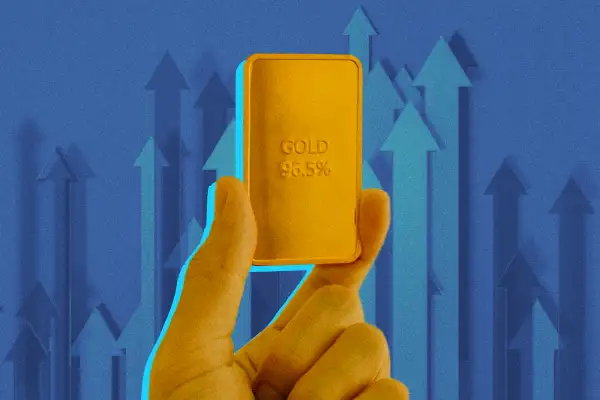Could Gold Hit $3,000 by the End of 2024?
Money is not a client of any investment adviser featured on this page. The information provided on this page is for educational purposes only and is not intended as investment advice. Money does not offer advisory services.

This year, gold prices have experienced significant increases. With only two weeks remaining in 2024, the price of gold has gone from $2,073 to $2,636 — an increase of nearly 30% in less than a year. With such a tremendous boom, many investors wonder just how high the price can go — and how quickly it can get there.
Could gold hit $3,000 by the end of 2024? While it's possible, many experts say that rapid price increase is unlikely. However, it could reach that level in the coming year.
Gold's performance in 2024 and into 2025
The price of an ounce of gold increased by nearly $600 since the beginning of 2024. The precious metal only needs to gain a few hundred more to reach the $3,000 threshold. However, based on its recent performance, the price of gold may increase before year’s end but will likely fall short of the $3,000 mark in 2024.
Instead, many analysts say the price will reach a more modest $2,800 before the year's end. But the $3,000 price level looks much more attainable in 2025, with numerous experts saying they expect gold to exceed that price point in the coming year.
Factors affecting gold's price
There are several factors driving gold's blistering price performance:
Countries' gold reserves
Many countries have their own gold reserves as tools to preserve the value of their fiat currencies, to hedge against inflation and to protect themselves against global economic issues. Countries like China and Russia have significantly boosted their gold reserves, buying tons of the precious metal. With these countries bringing in more gold, demand is up and gold's price climbs.
Consumer demand
Particularly as we head into the holiday season, the demand for gold among consumers is higher. Gold jewelry and electronics that rely on gold components are common gifts, so these products tend to sell at a faster clip than in other months. As a result, gold prices climb to match the increased demand.
Economic uncertainty
After the 2024 presidential election, many people are concerned about how the change in the presidential administration will affect the economy. Consequently, economic uncertainty causes many investors to put more money into traditional safe-haven assets like gold and other precious metals. They may invest in physical gold, gold ETFs or gold stocks to diversify their holdings in an effort to get more stability for their portfolios.
Interest rate cuts
When interest rates are high, investors feel safe keeping their money in relatively safe investments like Treasury bonds or certificates of deposit (CDs); the annual percentage yields (APYs) on these investments will be relatively high, so the price of gold tends to lag as demand slows.
However, when interest rates fall, the demand for gold increases because investors start looking for other investment options to compensate for the reduced rates.
With the Federal Reserve slashing interest rates in 2024, it sets the stage for a strong performance for gold in 2025.
How to gain exposure through gold investments
As a potential gold investor, there are several ways to put your money into gold:
Physical gold
One option is to invest in physical gold. This is a good option if you like the idea of having physical possession of your investment; you can purchase investment-grade gold coins and bars, but this option can involve added storage and insurance costs, and it can be more difficult to find a buyer when you need to liquidate your holdings. Additionally, it is critically important to purchase physical gold through a reputable dealer. Read our list of the best online gold dealers to learn more.
Exchange-traded funds (ETFs)
A gold ETF allows you to get exposure to gold without having to buy and store physical precious metals. They can either be a basket of gold stocks (e.g., gold miners, gold exploration companies and/or gold streaming companies), or ETFs that track the performance of gold's price. ETFs can provide more liquidity than physical gold, and they can be bought and sold on traditional market exchanges. To learn more, read our guide to the best gold ETFs.
Gold stocks
Another option is investing directly in gold stocks. These include publicly traded companies that use gold as part of their manufacturing processes, that are gold miners or gold streamers and even jewelry makers. Buying shares of these stocks tends to be more liquid than physical gold.
Planning your investment
Will gold reach $3,000 by the end of 2024? Although it's possible for gold to reach that level, many experts believe it's unlikely for the yellow metal to increase that much.
Regardless of what you think gold will do in the coming months, avoid trying to time the market; gold's price can fluctuate, so it's better to think of the asset as a long-term investment.
Additionally, gold should only make up a portion of your investment portfolio. If you appropriately diversify your portfolio, you don't have to worry about day-to-day price changes; in general, experts recommend putting no more than 5%–10% of your investments into alternative assets like precious metals.

